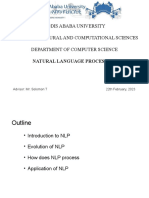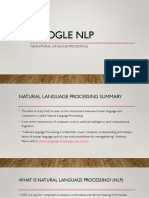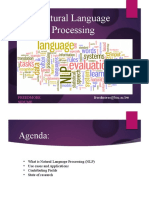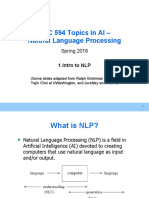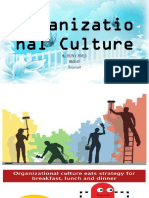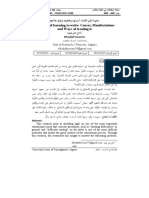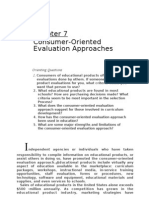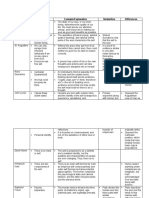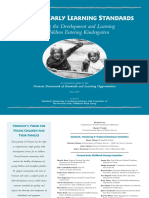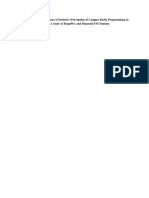0% found this document useful (0 votes)
123 views25 pagesNLP PDF
Natural language processing (NLP) is a field that develops techniques to allow computers to understand human language. NLP has its roots in computer science, linguistics and artificial intelligence. The goal of NLP is to allow computers to perform useful tasks by transforming free-form text into structured data. Some of the major challenges in NLP include natural language understanding, generation, and speech recognition. Common NLP tasks involve information extraction, classification, named entity recognition, sentiment analysis, question answering and machine translation.
Uploaded by
YukhimovCopyright
© © All Rights Reserved
We take content rights seriously. If you suspect this is your content, claim it here.
Available Formats
Download as PDF, TXT or read online on Scribd
0% found this document useful (0 votes)
123 views25 pagesNLP PDF
Natural language processing (NLP) is a field that develops techniques to allow computers to understand human language. NLP has its roots in computer science, linguistics and artificial intelligence. The goal of NLP is to allow computers to perform useful tasks by transforming free-form text into structured data. Some of the major challenges in NLP include natural language understanding, generation, and speech recognition. Common NLP tasks involve information extraction, classification, named entity recognition, sentiment analysis, question answering and machine translation.
Uploaded by
YukhimovCopyright
© © All Rights Reserved
We take content rights seriously. If you suspect this is your content, claim it here.
Available Formats
Download as PDF, TXT or read online on Scribd
/ 25




















